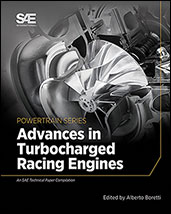Technical Paper
CO2 Emission Benefits of Homogeneous Charge Compression Ignition and Direct Injection Compression Ignition Combustion
2021-09-22
2021-26-0423
The paper aims to provide an assessment of the Homogeneous Charge Compression Ignition (HCCI) combustion, compared to a well-established alternative such as Direct Injection Compression Ignition (DICI) combustion, under the criteria of CO2 emission reduction potential. The assessment is performed by reviewing the relevant literature and analyzing the commercial products available on the market that are featuring these two technologies. DICI engines have demonstrated in the real world the ability to deliver top fuel conversion efficiencies of about 50%, and fuel conversion efficiencies largely above 40% over most of the load and speed range. Research-only HCCI engines have delivered fuel efficiencies well below 40% in the very few carefully selected map points where they working during carefully performed laboratory experiments.


